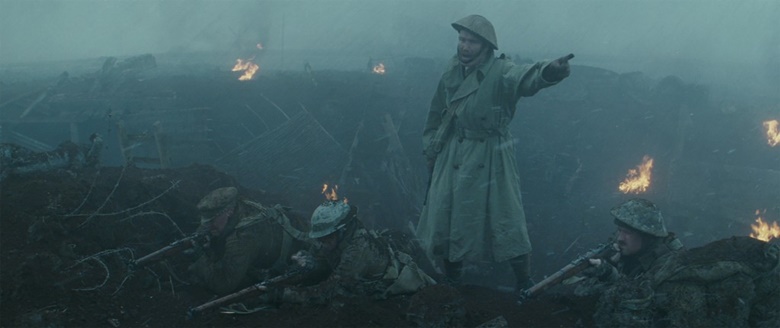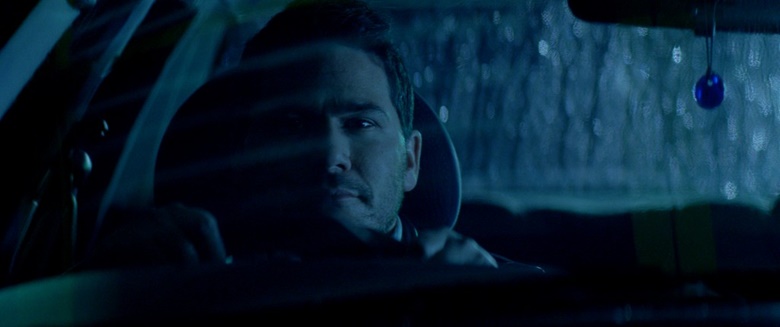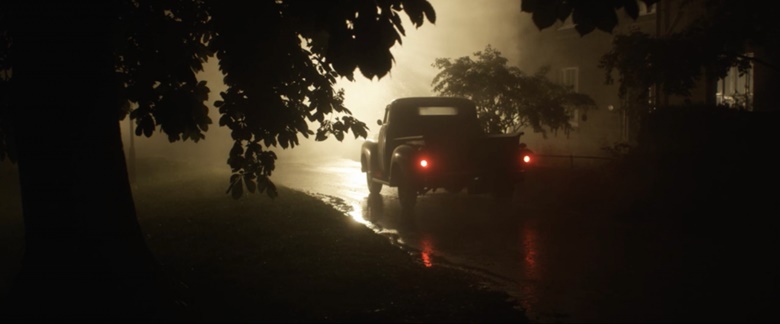Conversation with Stephen Murphy
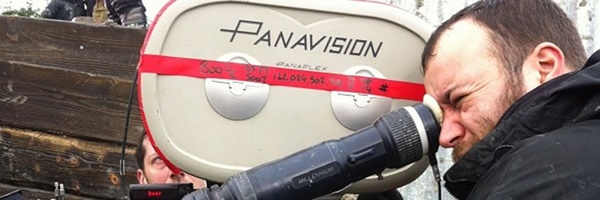
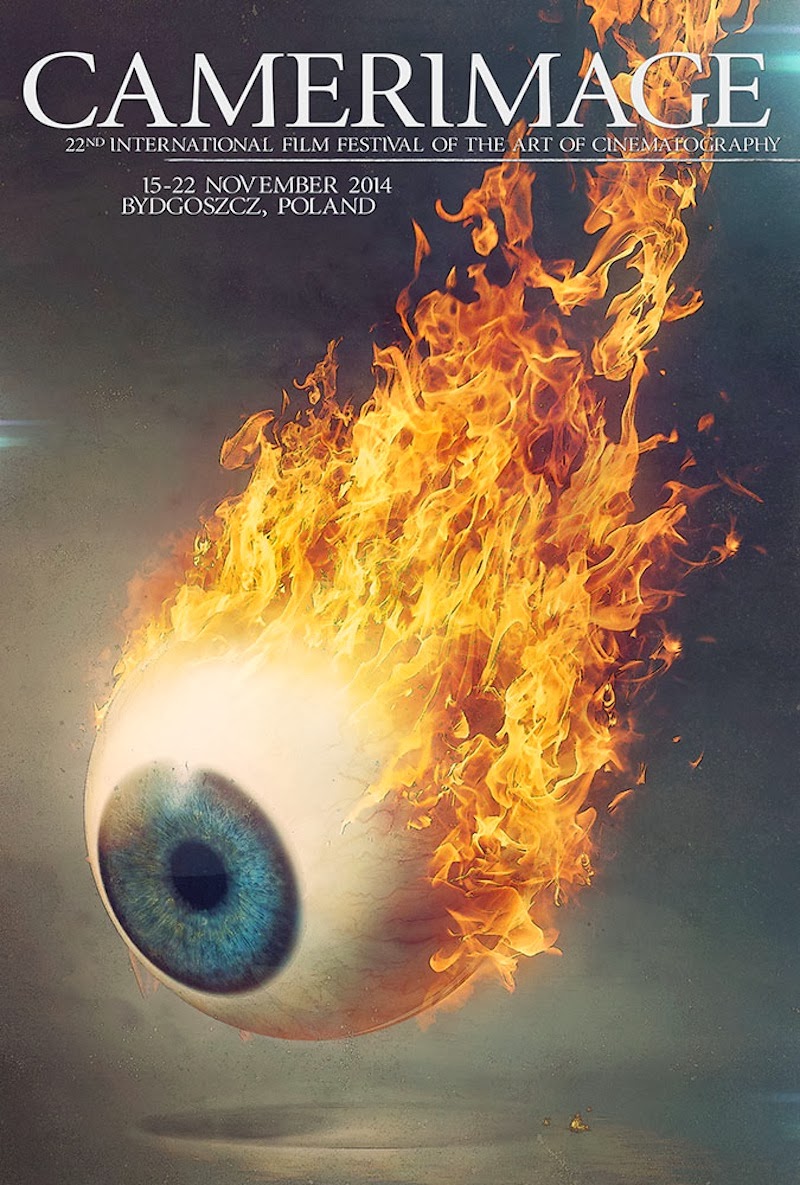 Kilka dni przed Festiwalem Camerimage – nie przesadzimy mówiąc, że to jeden z najlepszych festiwali filmowych w Polsce – ruszono z bardzo ciekawą inicjatywą. W sieci zadebiutował CamerimageBlog, na którym będą ukazywać się teksty poświęcone sztuce filmowej widzianej przez pryzmat operatorów/autorów zdjęć.
Kilka dni przed Festiwalem Camerimage – nie przesadzimy mówiąc, że to jeden z najlepszych festiwali filmowych w Polsce – ruszono z bardzo ciekawą inicjatywą. W sieci zadebiutował CamerimageBlog, na którym będą ukazywać się teksty poświęcone sztuce filmowej widzianej przez pryzmat operatorów/autorów zdjęć.
Jednym z głównych celów nowego portalu jest przedstawienie prac profesjonalistów związanych z festiwalem oraz rozmowa na temat ich postrzegania kina, czy też własnej pracy. Na pierwszy ogień wystawiony został Stephen Murphy, znany chociażby z operatorskiej pracy przy disnejowskiej Czarownicy.
Ten, jak również kolejne teksty publikowane na CamerimageBlog, ukazywać będą się i na naszej stronie w oryginalnej wersji językowej, czyli po angielsku. Zachęcamy do lektury, bo rzadko można w internecie natrafić na rozmowy z profesjonalistami po drugiej stronie kamery.
Wywiad przeprowadził Darek Kuźma, obecnie rzecznik festiwalu Camerimage, a przez wiele lat członek KMF.
*****************
CAMERIMAGE was, is and always will be a place for discussion about the broadly defined art of cinematography, as well as a platform for discovering new and emerging talents who can alter our way of seeing things with their work. Therefore, one of the main aims of this Blog is to share with you what we already know and appreciate – the amazing work of some of the DPs we consider our friends.
Stephen Murphy is certainly such a cinematographer. Having shot numerous features, commercials and music videos, he’s only on the brink of going fully into the world of features. His work on “Coward” and “The Formorian”, both of which we want to share with you, is only a sample of what he can do.
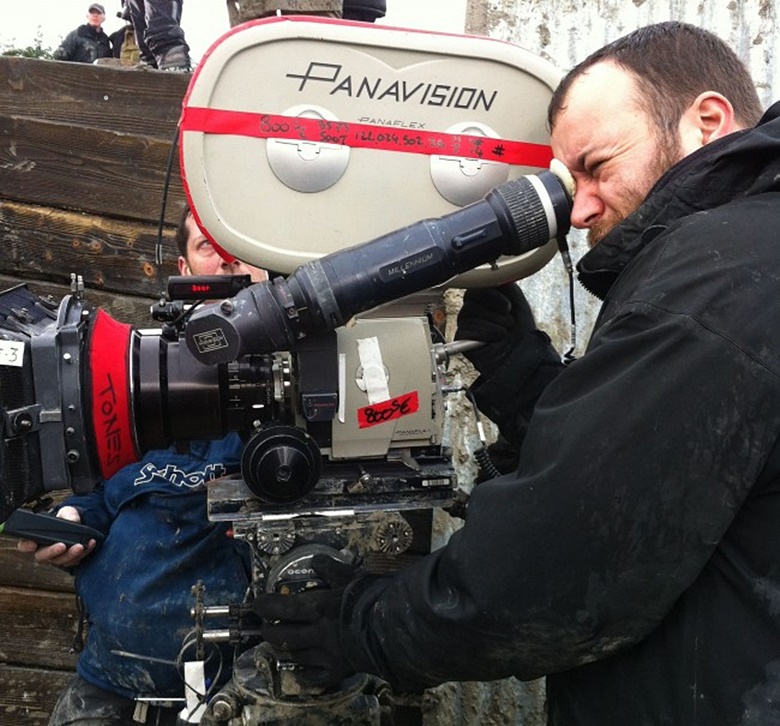
*****************
Let’s start from the beginning. Your background is in make-up, design and sculpture. How much would you say it helped, influenced or enhanced your work as a cinematographer?
Oh, it helped me a lot. One of the things working as a make-up effects artist and doing miniatures requires from you is the ability to previsualize how your effect is going to work in the given shot. And that kind of thought process of heavily figuring out what part of the effect you need to build to tell the story is something that I’ve carried through to my work as a cinematographer. I’ve refined the skill to be able to previsualize what something will look like, what we need to achieve the shot, what the subsequent shot needs to be to connect the story, things like that. And because we were working in an analogue environment, before CGI, it required you to think outside the box a lot. And that’s something that’s stayed with me. And it’s really, really helped me. Now I’m very comfortable walking into a set without storyboards, without seeing rehearsals. I’m looking at what the actors are doing and then figuring out what the best way to go and tell that story is.
Would you say that was the most important factor that shaped you as a cinematographer?
That too, but I’d say going through the ranks was the most important one. I couldn’t get into film school, because it was very expensive at the time, and I only got to do a small 5 or 6 week course. So I had no choice but to become a camera trainee, and work up through the ranks as an assistant, then as a camera operator, and then as a DP. I didn’t fully appreciate what that was going to do for me, but, in hindsight, it’s had a huge impact on my career, and it’s definitely made me the cinematographer I am today. Because it meant I got to learn from a huge variety of people, not just the cinematographers that I was working for, but also the focus pullers, the gaffers, the key grips.
You’ve worked as a Steadicam operator for quite a number of features, like “The Guard” and “Hunger”. How much did working with such directors as Steve McQueen and John Michael McDonagh and cinematographers like Sean Bobbitt and Larry Smith help you in understanding your own style?
They were all very influential experiences for me, because you get to see how many different people solve similar technical challenges and similar artistic challenges. You get to see the work of other departments, you know: a camera department, a grip department, an electrical department. And you get to work on jobs at different scales, so you can very quickly go from doing a small documentary to much larger feature film or TV series, and see how different cinematographers approach those challenges differently. And then you get to cherry-pick what you like of their style and combine everything into your own. I was very fortunate. I remember one particular occasion on one of the first jobs I did on a TV drama. I was a camera trainee and the gaffer took the time to take me to the place where they screened dailies, and he said, “Remember what we did yesterday? You see the way that light’s going through the windows? You see the effect this has on that?” He literally talked me through what we’d done the day before on the set, and showed me the end result. And that was invaluable. I think it’s a really good training ground.
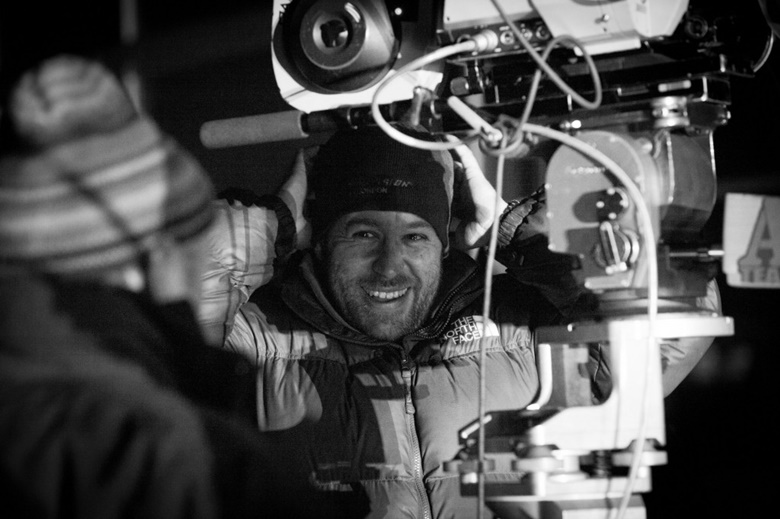
This organic development of your career took definitely more time, but you really seem to be quite confident about your work now, more so than many others who became cinematographers quite early in their life.
Yeah, you know, I didn’t do many features when i was a young DP, but I kept myself busy all the time. You see, I’ve been lighting since I was a young assistant, and shooting shorts or small videos in parallel with my career as an assistant. And then those projects began to get more and more interesting and more and more complex. In Ireland and in the UK there’s a sort of short film world when you can make many projects throughout the course of a year, but they don’t always have great finances in place. But it’s a great way to learn, and it’s a great way to practice new things. And what I was able to do was watch all these other great DPs working and then apply that knowledge to the short films I was making over weekends or in quieter times. It gave me the confidence to experiment and take chances with my work, because a lot of the stuff I do visually is, you know, not safe (laugh). And sometimes it doesn’t work out. There’s been a few times where I’ve gone too far, it’s been too dark, too bright, or whatever. But it was always a really, really good learning experience. And it meant that I’ve got really comfortable quite quickly, and started doing bolder work. It helped me to develop my particular style, my body of work and when people approach me now for projects its based on that bolder style that I’ve developed over many years.
One of the projects you worked on was “Maleficent”, you are listed as a VFX camera operator. Tell me about that experience. Would this be your cup of tea as a cinematographer?
Yeah, I did a small amount of work on that, it wasn’t extensive by any means. I was working as a camera operator for the visual effects department. After the main unit had finished shooting, guys from Digital Domain set up a team to shoot motion capture of a couple of characters that were meant to be built entirely in CGI. They wanted the aesthetic and the input of real camera operators behind to try to add some real qualities to the digital footage. It was an interesting experience because I hadn’t done anything like that before, and it was great fun, but it wouldn’t be the kind of environment that I would want to work in as a cinematographer. I like tangible things, I like sets and locations, I like seeing actors on the sets, and as much as I might enjoy films of grander scale, I don’t enjoy shooting half of the movie in front of a green screen.
You seem to be more of the 80s guy.
(Laugh) That’s correct. That partly comes from my background with effects. I enjoy tangible things, I love creature effects, I love miniature effects, I love matte paintings, I love real sets and locations, you know. And I think it’s those things that look better with real footage than non-existing, green screen shots and entirely CG-generated environments. So, hopefully, I will get to work on projects that are more, yeah, real, more tangible. I’m particularly fond of American cinema from the 70s and early 80s, when they reached the pinnacle in using miniature effects, creature effects, you know, all those wonderful sets. I mean, they used them brilliantly, had this effect connected with another, use a puppet for this shot, then cut to a miniature for the next shot, and then cut to a real set for the next shot. And that illusion worked brilliantly. That’s more of what I’d be interested in.
Let’s talk about “Coward”, your most impressive and recognized work so far. Without spoiling the fun of watching it, that’s a short film about soldiers trying to survive in the trenches during World War I. You decided to shoot it with 35mm anamorphic lens. Why this and why not digital?
Both myself and David, the director, are very strong proponents of shooting on film. I still feel that it’s the best format technically, and I also feel it’s the best format aesthetically. I think the way it allows you to work on a set is incredibly efficient. And David has very similar thoughts. He loves the aesthetic of 35mm, and he isn’t particularly fond of digital capture. So that was the choice, basically. Digital was never a consideration, it was always gonna be 35mm. The only question was whether it was going to be Super 35 or anamorphic. We decided on the anamorphic workflow simply because we wanted to stage the scenes in a slightly more old-fashioned style. You know, use the field of view of the lenses to achieve a deeper compositional blocking where we could use the width and depth of the trench, and how the actors move within the frame. And you could do that a lot better with an anamorphic lens than with a Super35mm spherical lens, just because of the way they are designed. And once we were able to get a great deal out of Panavision, then it was a no-brainer.

“Coward” shoot sounds incredibly difficult. You had only 7 days for the trenches’ scenes. How much ahead were you able to plan the shoot?
We had discussed the visual style in theory for several months before we started shooting. And when we finally got the money in place, we discussed a couple of visual references. We tried to avoid looking at other movies from that period because we didn’t want to be influenced, subconsciously or not. And David come across a painting that we loved – “Gassed” by John Sargeant. We realized it was on display in a museum in London, so we went and had a look at it. And it was a beautiful painting, very large – it’s like a small-sized cinema, and in similar proportions to an anamorphic, widescreen frame. It really had an effect on both of us, and that became the main visual point of discussion. And then we visited the Imperial War Museum because they had reconstructed part of a trench. We wanted to see that and see what that felt like, and to look at some of the props and the costumes. That began to inform our discussion about the conditions of the soldiers who were staying in the trenches. After that we went into the construction of the trench, which was, I think, in December, and we ended up shooting in January.
Shooting on location presents its own set of challenges, especially in such a short period of time. You were shooting the trenches scenes on a field covered in mud and in difficult weather conditions. How did that influence the whole project?
You have no idea (laugh). As the trench was being dug, we were able to discuss how scenes might be shot and broken down. As it happens, I’m a pretty confident storyboard artist, so I was able to sketch some ideas and discuss them with Dave. And as the trench got closer and closer to completion, we could actually get into it and look at things with the storyboards in mind, and figure out what would work, what wouldn’t work, what needed to change, stuff like that. Then, when it came to the actual shoot, we were dealing with the weather and logistical difficulties of working in the terrain covered in rain, snow and incredible mud. So all of our plans went out the window (laugh). We basically had to adapt. The skills I’ve mentioned before became very helpful, thinking outside the box, previsualizing on the day, watching what the actors were trying to do and figuring out the best way to shoot things. I think sometimes people get too locked into previsualization, or too locked into storyboards, and you really need to see what’s in front of you, see what’s really happening on the set, and then try and work around that and take advantage of what’s there.
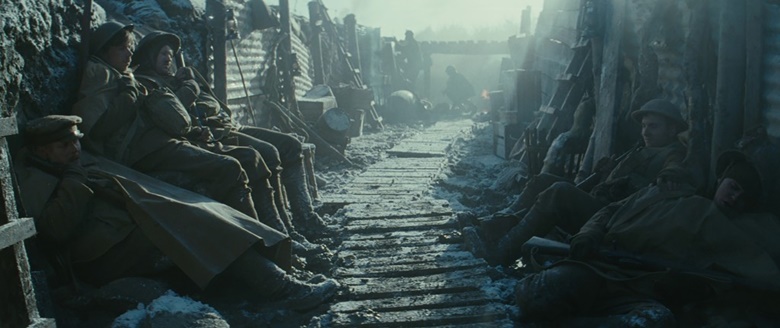
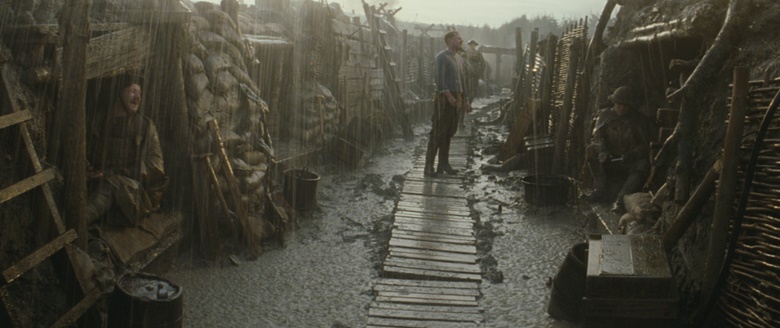
I’ve read on your blog that you always try to do as much lighting on set as you can, and minimize the work done in post. Was that the same in terms of such a difficult shoot as “Coward”?
Well, the general principle I have, whether I’m shooting on film or digitally, is to create the look in the camera, on the set. The main reason is that I want the director, the composer, the editor and the producers to see the rushes and realize that it looks this or that, because that influences all the other departments that are going to work on the footage after you’ve shot it. I filter the lights, the camera, the lenses, I choose old lenses or new lenses or different film stocks, I change the processing if I need to. And it doesn’t matter whether I’m shooting on film or digital, I always want to control the visuals within the camera. In the case of “Coward”, I knew the story had to happen within the course of one day, starting very early in the morning and then moving to nighttime. And I knew we wanted to show the audience how difficult the conditions were. I started with a very cold, early morning palette, and then, slowly, moved into noon scenes where there was a more neutral color, and then the cold began to creep back in the scenes the closer it got to the nighttime, until eventually it was nighttime and it was a full blue, moon-lit look. And I did that by using a variety of filters. I started with uncorrected tungsten stock and Harrison blue-grey filters, switched to 85 filters for the morning scenes, then to Chocolate filters instead of an 85 to introduce a little cold back into the image, then to an 81 EF and finally back to just uncorrected Tungsten with no filters for the night scenes. That transition of day into night informed the whole visual process and actually made it easier to control in camera.
Well, it worked great. You even had some dolly shots!
Yeah (laugh). The original idea, when we were planning our shots, was that we would have a lot of camera movement. You know, to allow the shots to develop from, like, a wide master into a medium close-up or vice versa. We started with that in mind, and we wanted to use a dolly track in the trench, but what we hadn’t anticipated was how difficult the terrain would get. Once the rain mixed with mud, it became almost impossible even to walk in the trench, not to mention do any kind of dolly move. And the drainage in the trench was very poor, so whenever it rained, or if we made rain, the water would sit in the bottom of the trench. We did manage to get a couple of dolly shots, but, overall, we had to abandon that idea (laugh). What we did instead was that we decided that if we couldn’t move the camera, we would move the actors within the frame a little bit more. They would actually change the size of the shot by moving closer and further away from the camera. And it worked really well. Again, it was a good example of what we talked about earlier, having that ability to throw away the storyboards and retain some sense of the previous concept but apply it to the conditions you have right in front of you and get the best out of the circumstances.

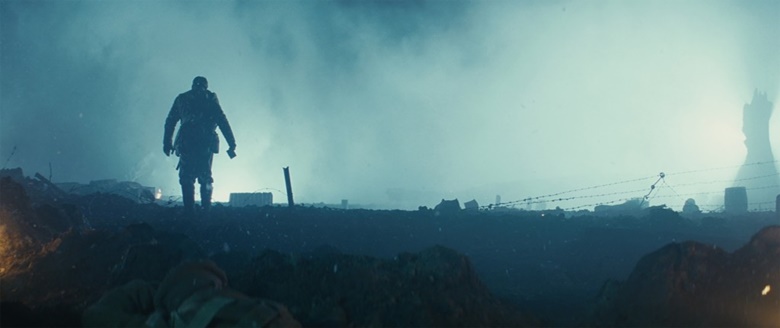
There’s a particular scene I really like, the one in which a lone soldier is standing on the edge of the trenches, being shell shocked and walking hesitantly forward. He has fire burning on both of his sides, mud sticking to his feet, and in front of him – a cold, blueish glow of no-man’s land. It’s hauntingly beautiful, slightly eerie, and has a painting-like quality to it. Not to mention the fact that it encapsulates the feeling of the whole film. Tell me about your approach to that scene and how you made it.
That’s quite interesting. When we shot that scene we had very little time left, and I think we shot that in maybe 25 or 30 minutes. We had to redesign where that scene took place because of how delayed our schedule was that particular day. Again, we had the same concept as planned, but had to apply it in a different set of physical parameters. And basically what we did was we set the actor in a little crater, maybe 40-50 feet away from the trench, and then I put all the lights I had in the trench. I had 12Ks, 6Ks and 4Ks. We also filled the trench with smoke. We had a fantastic physical effects crew that did smoke and pyrotechnics for the whole film, and they were really, really good. And so they created a wall of smoke for me to backlight which gave me the separation between the actor in the foreground and then this blueish wall of smoke behind him. And then we would just drop in little fires, and then a little bit of light in the foreground to light his face – and that was it. Very simple, we shot it with two cameras so we only had to do it twice, two takes.
World War I is not very popular period in cinema, at least not nearly as much as World War II or Vietnam War. Did you want to make a feature out of “Coward”?
Actually, David, the director, and one of the producers from “Coward” have commissioned a screenplay set in the same period, dealing with a similar subject matter. They’re very keen to do a feature film out of that material. At the moment they’re raising the financing and they hope to shoot it next year. So, fingers crossed.
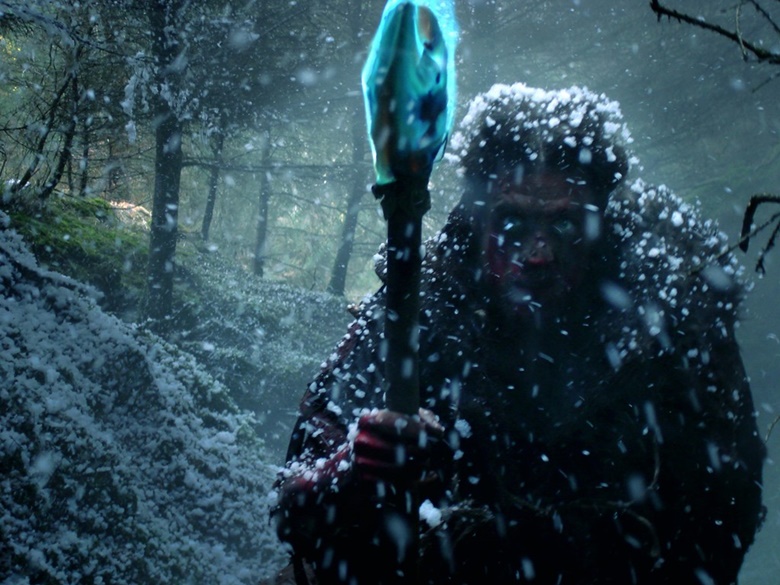
When I was researching your blog, I found “The Formorian”, this little gem of a film. Short film, shot on a very tight budget, very greenish and enchanting. You gave it this mythical, ephemeral look. Can you say a few words about that project?
Well, thank you. The budget was very, very small, so, again, it was the case of us figuring out the best approach. The director was a woman called Aideen McCarthy who had been a camera assistant at the time. That meant she had a very strong visual aesthetic and it was easy for us to discuss what would and wouldn’t work. Thanks to our day jobs, we both had great connection with camera companies, and they gave us very reasonable rates. So we got to shoot on Super35 and, basically, we wanted to create an Irish fairytale story. We found some 2 or 3 locations within a very short reach of each other that had really picturesque and mythological look to them. We picked the right time of the day to shoot and we shot very, very simply. We knew we needed strong visual elements like the flame from the torch, and the appearance of snow. And, yeah, it worked really, really well. It was a two day shoot. It took all day to get the crane up the mountain and all day to take it down. And then we had one day for the rest of the shoot with the actors. I think the key to a lot of shorts is that if you want them to look good and you don’t have a huge budget, you have to try and keep things simple. It’s better to do something visually striking but simple rather than overly complicated and difficult to achieve.
So the lesson is that there’s nothing you cannot do when you have the will and creativity.
Yes, I agree!
You are, like you said, an ardent fan of film. There was recently an outcry in Hollywood, and all over the world, about Kodak facilities and stock. It was saved, at least for now. What is so great about film that you like, in comparison with digital?
I would say I still prefer the way film renders color. I prefer the way it renders highlights and shadows. I love film grain, I think that’s a really powerful tool in our arsenal. I mean, you don’t always need it to be grainy, but I think that even when something is fine-grained it still adds a texture that I miss when I see digitally photographed films. And I think the best way to describe it is through the words of John Schwartzman, ASC: “Film fails beautifully.” I love the way film rolls into highlights, drops off into shadows, renders colors, when it’s underexposed, when it’s overexposed. Aesthetically, I think it’s a far superior product. And then, in terms of how we work with it, film has a very simple workflow, it’s very easy to use on a set, the cameras are very durable. You don’t need an awful lot of supporting equipment to work with film. And the other thing is, there can be a tendency when you shoot digitally to invite a huge amount of comment on the image when you’re on set. People tend to overly analyze the HD monitors instead of looking at the story that’s in front of the camera. I think that with film we’re more likely to watch the actors, the set, the story.


Let’s end our conversation with your passion project – you’re well known not only for your films but also for PDF docs that you create as a kind of tribute to your favorite cinematographers. How did that start?
That started for me a couple of years ago. I decided I want to make a conscious effort to sit down and study the work of cinematographers who influenced me when I was trying to learn the craft. I started researching, reading, re-reading. I have a vast collection of American Cinematographer, going back to the 1970s, and I just love all that stuff. While reading it all and watching their movies, I thought that maybe I could take something they said and make a connection with how they shot their movies. I’ve chosen PDF documents so I can keep them up on my iPad. I shared them with a friend, who’s another cinematographer, and he said that I should put them online. I didn’t think anyone would be interested, but I’d got a great response, so I continued to do it. People from all over the world have seen them. It’s been downloaded thousands and thousands of times. And some of the cinematographers that I’ve featured in them have gotten in touch to say that they appreciate what I’ve been doing. I’ve been fortunate that in the last 10 years there’s been a number of DPs who have been very generous with sharing how they do things. I’ve been able to ask them loads of questions, so this is my small way of paying that back and keeping the flow of information alive.
*****************
We’ve got an absolute treat for you, courtesy of Stephen Murphy! A world premiere of yet another brilliant PDF doc made by Stephen Murphy – about the work of the masterful cinematographer Stephen H. Burum (“Rumble Fish”, “The Untouchables”, “Mission: Impossible”).
You can download the file here: https://www.dropbox.com/s/xlj8g3pe2kk1zrg/StephenBurum_DOP_Document.pdf?dl=0
Follow Stephen Murphy on:
Vimeo: https://vimeo.com/stephenmurphydop/videos
BLOG: https://stephenmurphydop.blogspot.com/
Website: https://www.stephen-murphy.com/
Twitter: https://twitter.com/Stephen_Murphy
